- WTI crude oil is still consolidating near the upper limit of the range at $41.50 a barrel
- OPEC + may consider extending major cuts for next year, theoretically from January production cut is to be 5.8 million barrels per day
- The second wave of coronavirus is accelerating: up to 60,000 new cases are recorded in the US per day, while in France up to 30 thousand cases
- OPEC Secretary Muhammed Barkindo points out OPEC and associated countries will not allow oil prices to fall amid the second wave of coronavirus
- In their recent reports, the IEA and EIA indicated a stabilization of the situation (market balancing), but this stabilization is still very fragile and will depend on whether the demand starts to fall again
- According to the president of Occidental Petroleum, US oil production will never return to pre-pandemic levels (still approx. 2 million barrels a day less than before the pandemic)
- The CFTC will impose position limits on the 16 commodity markets to prevent excessive price movements which are unrelated to fundamental factors and to reduce the involvement of speculators
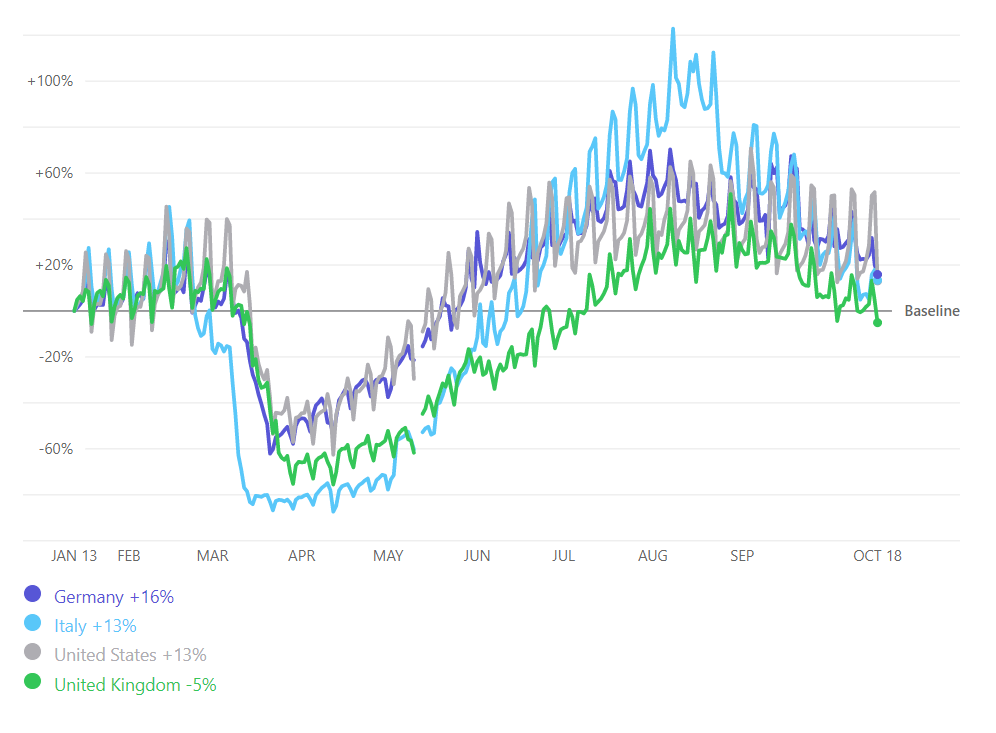 Worldwide mobility remains high. Nevertheless, the UK is already showing some signs of slowing. It is worth observing these indicators in the context of a collapse in demand. Source: Apple
Worldwide mobility remains high. Nevertheless, the UK is already showing some signs of slowing. It is worth observing these indicators in the context of a collapse in demand. Source: Apple
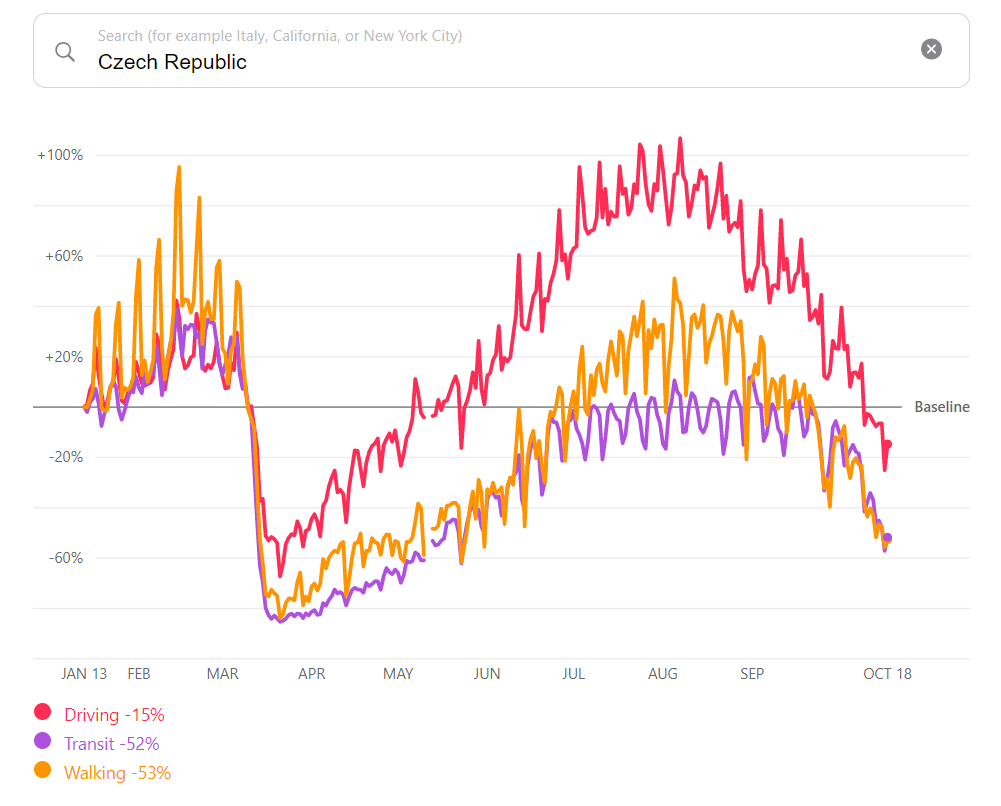 For example, in the Czech Republic, mobility decreased significantly after a partial lockdown was introduced. Source: Apple
For example, in the Czech Republic, mobility decreased significantly after a partial lockdown was introduced. Source: Apple
Start investing today or test a free demo
Create account Try a demo Download mobile app Download mobile app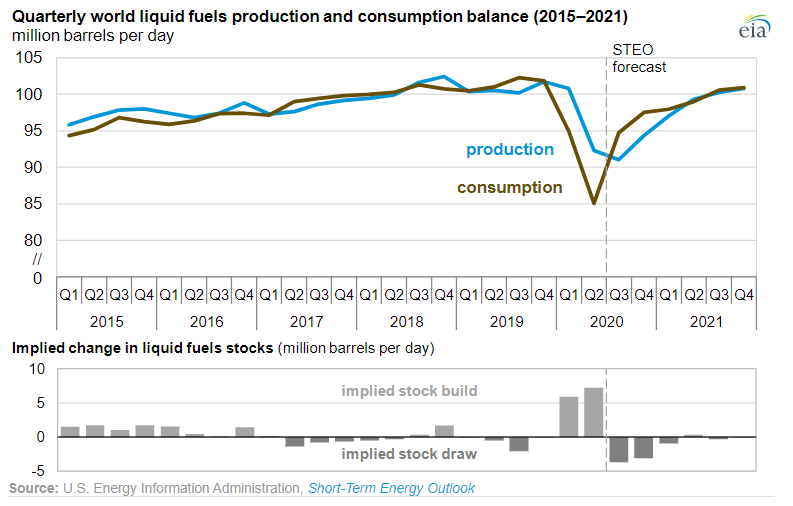 The EIA points to the relative stabilization of fundamental factors in the coming quarters. Source: EIA
The EIA points to the relative stabilization of fundamental factors in the coming quarters. Source: EIA
 The price remains in the upper limit of the consolidation zone at $41.5 per barrel. Seasonality indicates that prices may fall until early November. Source: xStation5
The price remains in the upper limit of the consolidation zone at $41.5 per barrel. Seasonality indicates that prices may fall until early November. Source: xStation5
Gold:
- According to JP Morgan, gold "premium" is significantly below the extreme or record levels compared to the US 10-year real yields. It is worth noting that at the peak of the boom in 2009-2011, premium amounted to approx. $400 per ounce (chart)
- In terms of price, gold may remain very stable until the elections, and even drop after them - as it was in 2016. Nevertheless, we should see some increases after the new year
- Positioning is stable. Seasonality indicates that the first upward impulse should appear at the beginning of December, and the next one around the end of the first week of January
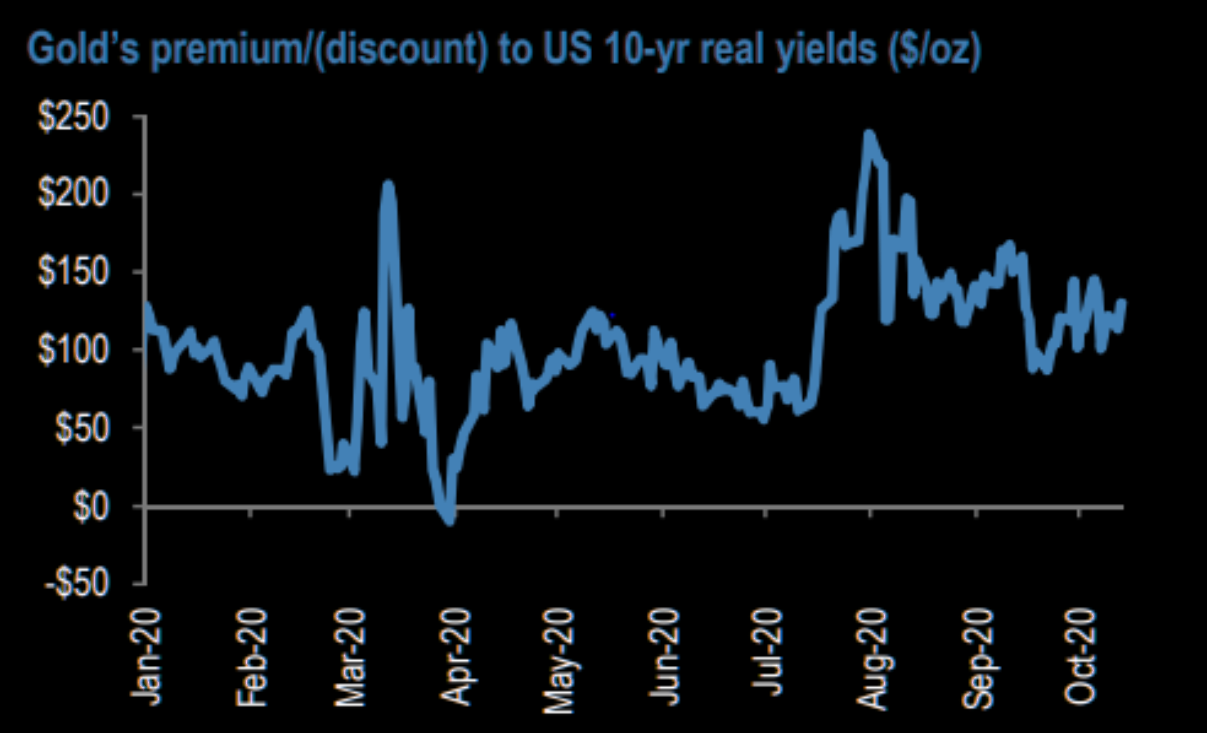 According to JP Morgan, gold premium compare to the US 10-year real yields is not very high. Source: Bloomberg, JPM
According to JP Morgan, gold premium compare to the US 10-year real yields is not very high. Source: Bloomberg, JPM
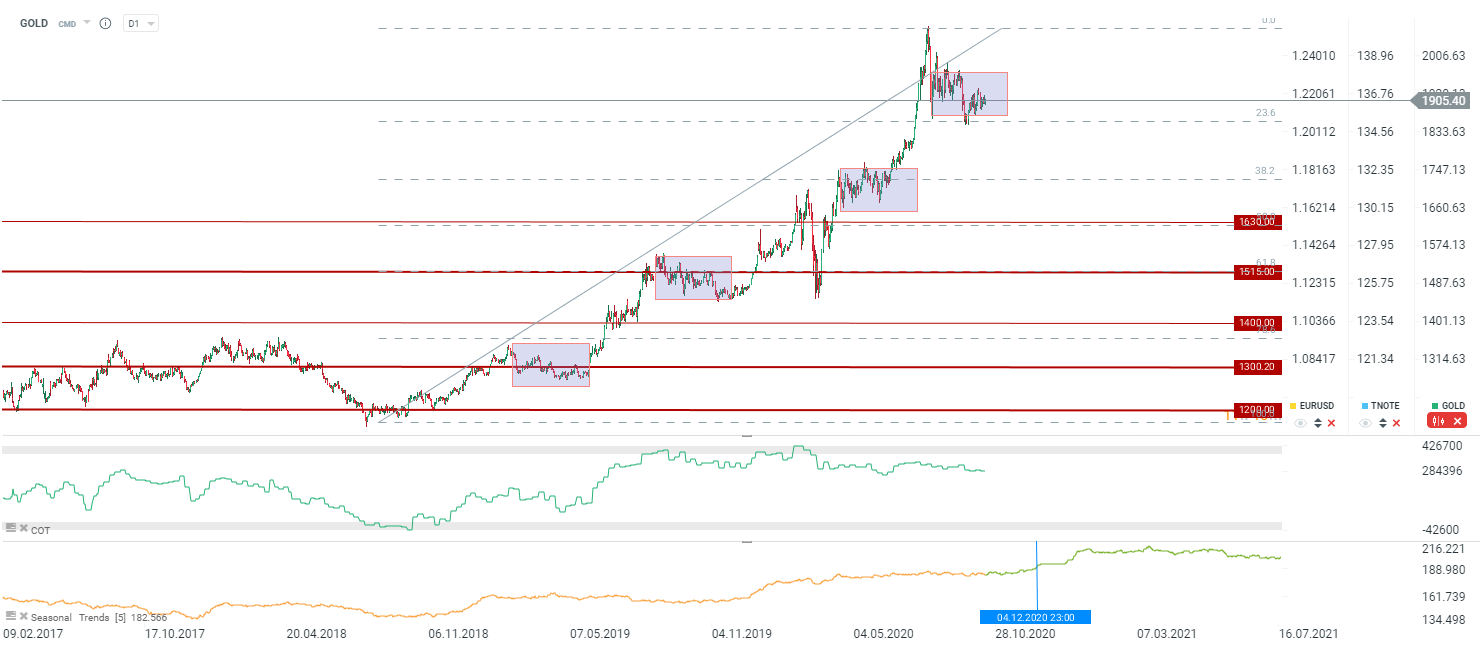 Gold remains in consolidation. It is worth noting that during the current upward trend, which continues from the end of 2018, we already have another consolidation, which in terms of range and duration time is very similar to the previous ones. Theoretically, we should expect some sort of breakout at the beginning of November (although this is not a rule - the end of 2019 brought further consolidation and the rally did not start until the beginning of January). Source: xStation5
Gold remains in consolidation. It is worth noting that during the current upward trend, which continues from the end of 2018, we already have another consolidation, which in terms of range and duration time is very similar to the previous ones. Theoretically, we should expect some sort of breakout at the beginning of November (although this is not a rule - the end of 2019 brought further consolidation and the rally did not start until the beginning of January). Source: xStation5
Natural gas:
- Recent weather data point to an intensification of cold temperatures in the central United States - this coincides with the seasonality of gas
- According to HFI Research, gas production is now much lower than last year and similar to 2018 (difference in the balance sheet compared to last year)
- According to HFI Research, the 2021 futures curve is undervalued
- It is worth remembering about the huge contango on the next contract! The structure of the futures curve in the long term indicates a possible temporary increase in demand.
- Still the amount of gas in storage is definitely higher than the 5-year maximum for a given period
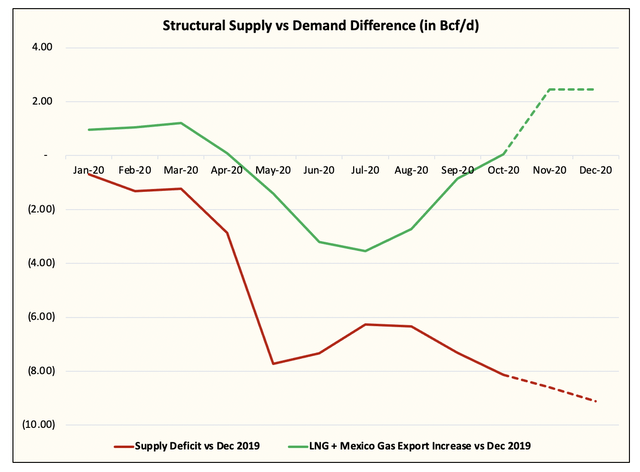 HFI Research believes that in December we will have much lower supply in terms of demand than a year ago. Additionally, HFI Research believes that the next year's futures curve is undervalued. Source: HFI Research, Seeking Alpha
HFI Research believes that in December we will have much lower supply in terms of demand than a year ago. Additionally, HFI Research believes that the next year's futures curve is undervalued. Source: HFI Research, Seeking Alpha
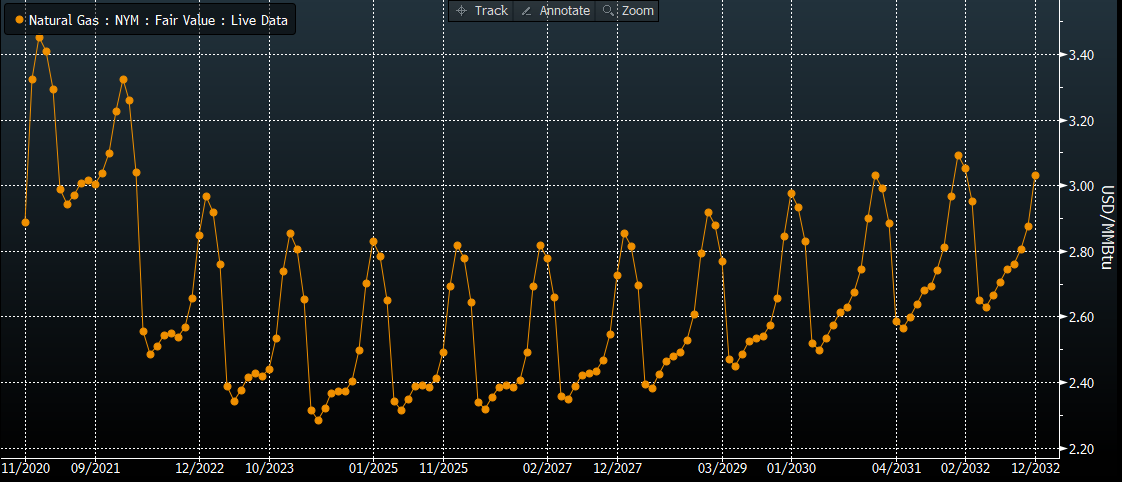 The futures curve for the next several months is quite high. It is worth noting that the nearest rollover will be very large! Source: Bloomberg
The futures curve for the next several months is quite high. It is worth noting that the nearest rollover will be very large! Source: Bloomberg
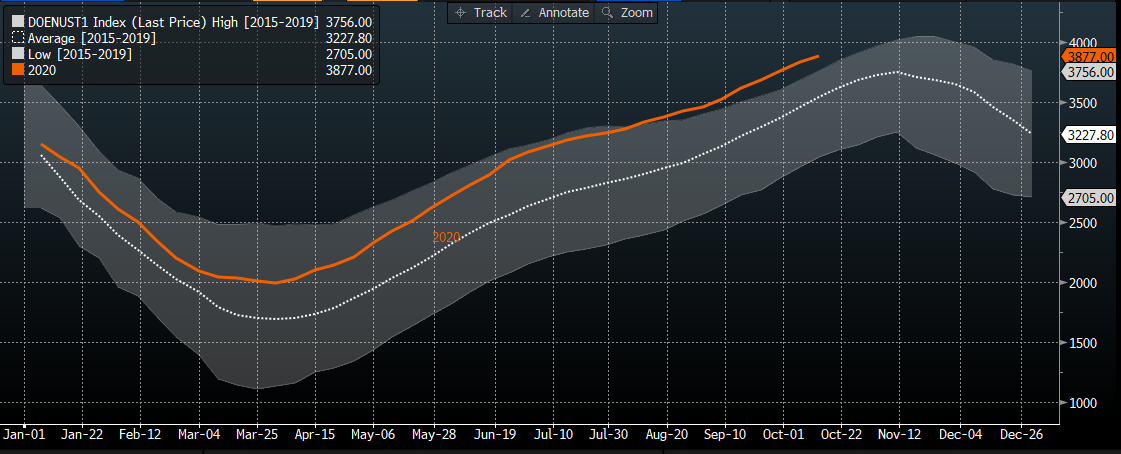 Gas inventories are still very high compared to the 5-year highs. Source: Bloomberg
Gas inventories are still very high compared to the 5-year highs. Source: Bloomberg
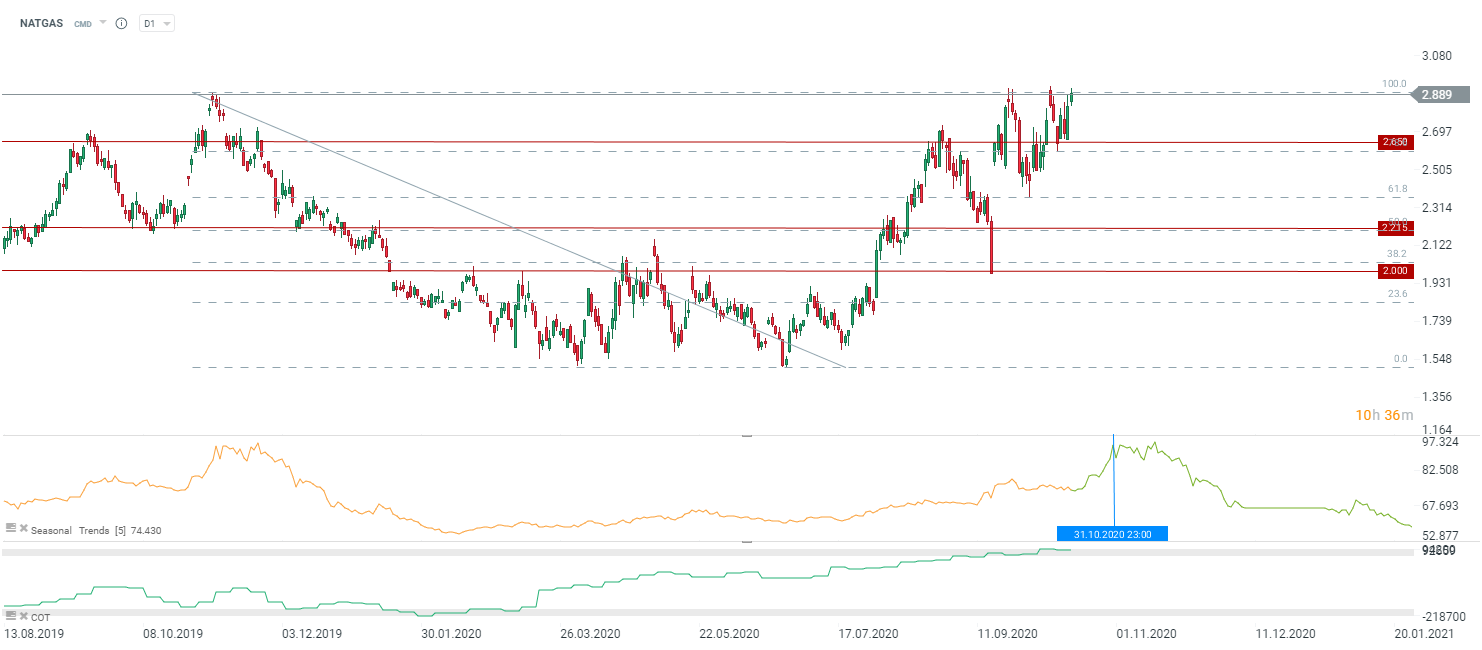 Theoretically, the price should start rising now. However, it is worth remembering that on October 21 a rollover will take place and the price may even jump to around 3.30 (according to the futures curve from today). In theory, seasonal highs should be reached at the end of October. However, high gas prices should persist for several weeks. Source: xStation5
Theoretically, the price should start rising now. However, it is worth remembering that on October 21 a rollover will take place and the price may even jump to around 3.30 (according to the futures curve from today). In theory, seasonal highs should be reached at the end of October. However, high gas prices should persist for several weeks. Source: xStation5
Coffee:
- The price of coffee is very low and is diverging from the price of sugar or the Brazilian real in the short term
- The reason is a change of behavior of speculators - pressure on coffee sales may persist in the coming weeks. In addition, coffee is adversely affected by the second wave of the pandemic, which reduces consumption mainly of Arabica (cafes and restaurants)
- What is crucial at this point - coffee inventories have reached their local low (reverse axis) and started to rise. If they start to rise sharply, coffee prices could fall below 90 cents a pound
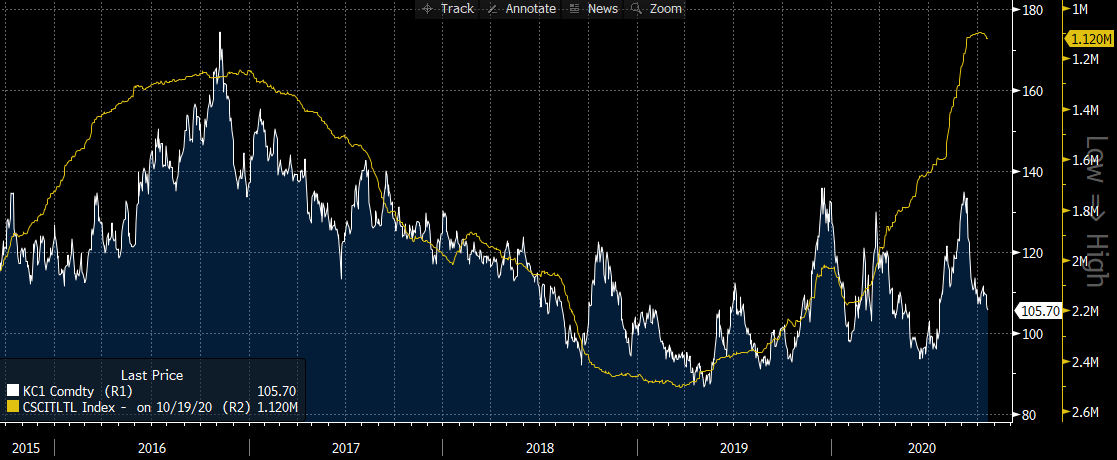 Coffee inventories have reached their local low and are starting to rise. This could bring coffee prices to around 95-100 cents a pound. Source: Bloomberg
Coffee inventories have reached their local low and are starting to rise. This could bring coffee prices to around 95-100 cents a pound. Source: Bloomberg
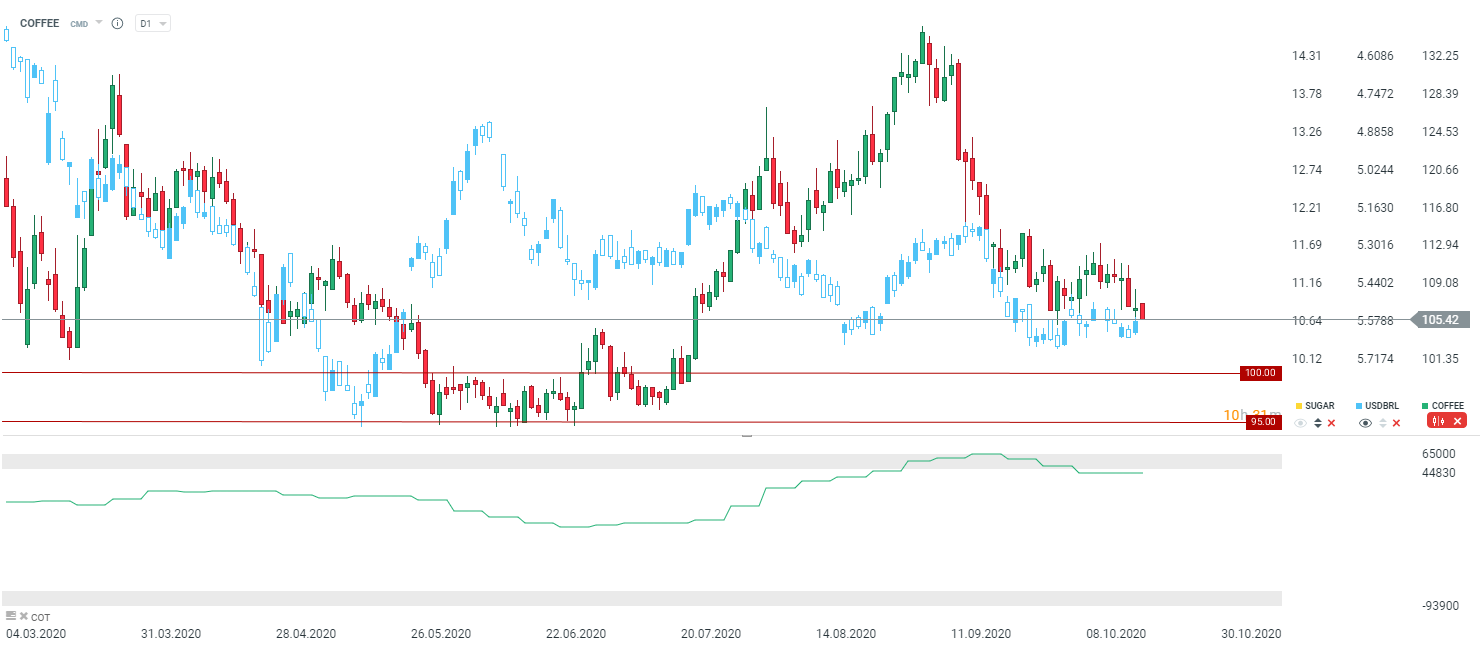 USDBRL is trading at high levels (inverted axis) but started to decline slightly, which is not the case in the coffee market. The price of sugar remains high due to concerns about large supply losses. Source: xStation5
USDBRL is trading at high levels (inverted axis) but started to decline slightly, which is not the case in the coffee market. The price of sugar remains high due to concerns about large supply losses. Source: xStation5
This content has been created by XTB S.A. This service is provided by XTB S.A., with its registered office in Warsaw, at Prosta 67, 00-838 Warsaw, Poland, entered in the register of entrepreneurs of the National Court Register (Krajowy Rejestr Sądowy) conducted by District Court for the Capital City of Warsaw, XII Commercial Division of the National Court Register under KRS number 0000217580, REGON number 015803782 and Tax Identification Number (NIP) 527-24-43-955, with the fully paid up share capital in the amount of PLN 5.869.181,75. XTB S.A. conducts brokerage activities on the basis of the license granted by Polish Securities and Exchange Commission on 8th November 2005 No. DDM-M-4021-57-1/2005 and is supervised by Polish Supervision Authority.
